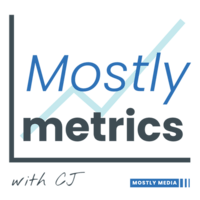👋 Hi, it’s CJ Gustafson and welcome to Mostly Metrics, my weekly newsletter where I unpack how the world’s best CFOs and business experts use metrics to make better decisions.
This guide breaks down how Uber has historically used pricing levers to optimize monetization and win market share, based on my conversation with Kapil Agrawal, a former Uber executive responsible for pricing and incentives.
Uber isn’t just a transportation company; it’s a case study in how to build and scale a dominant marketplace. The company’s approach to pricing, incentives, and take rates has been both aggressive and methodical—starting with deep discounts, strategically adjusting take rates, and leveraging data to refine its dynamic pricing models.
What you’ll learn from this guide:
How Uber thinks about Dynamic Pricing
How Uber uses Discounts and Promotions
How Uber sets and changes Take Rates
OK, LET’S RIDE!

How Uber Set Base Pricing: The Local Approach
Before understanding Uber’s take rates and incentives, it’s important to look at how Uber set its initial pricing in each city.
Uber’s team would enter a new market, take 10 to 20 trips in taxis, and use that as a benchmark for pricing.
Base pricing was set per mile and per minute, then discounted by 30-40% to create an attractive value proposition for riders.
On top of this, dynamic pricing (a.k.a. surge pricing) would kick in to balance supply and demand, ensuring enough drivers were available.
This two-pronged approach—base pricing plus surge—allowed Uber to manage both long-term pricing stability and short-term market fluctuations.
Uber’s next move—using discounts and promotions to get the flywheel going. But how did they avoid losing drivers while increasing profitability? Read on to see the exact playbook…
Subscribe to our premium content to read the rest.
Become a paying subscriber to get access to this post and other subscriber-only content.
UpgradeYour subscription unlocks:
- In-depth “how to” playbooks trusted by the most successful CFOs in the world
- Exclusive access to our private company financial benchmarks
- Support a writer sharing +30,000 hours of on-the-job insights

